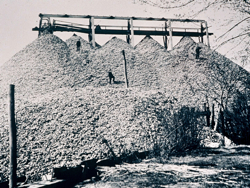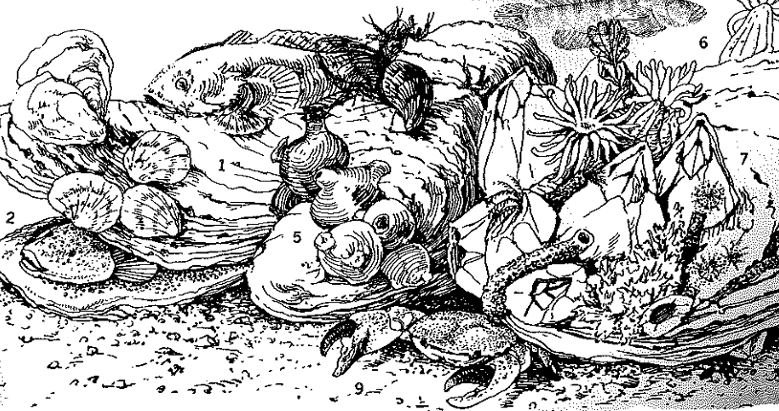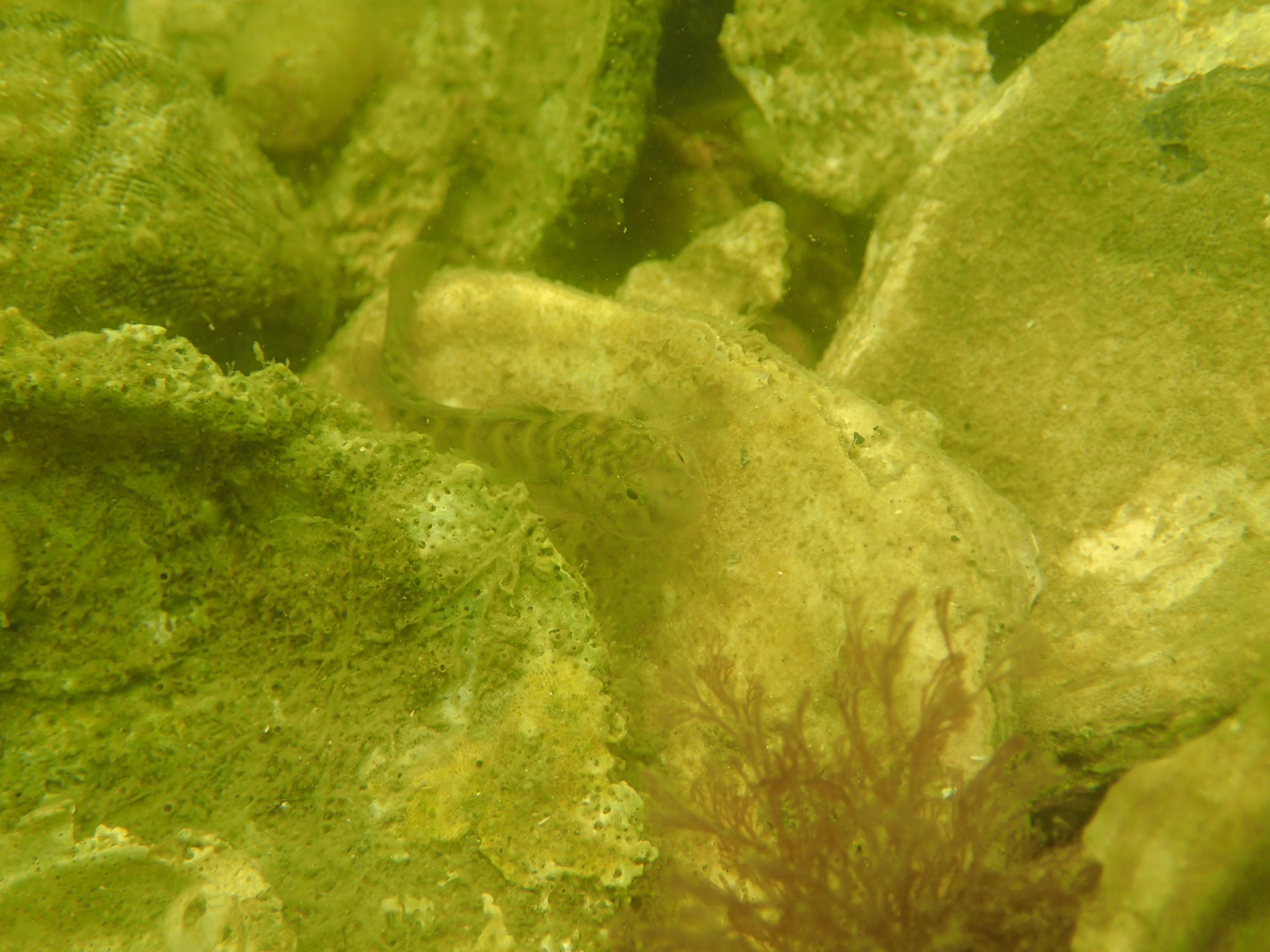Background
History of Decline Oysters have a long history as an economically important resource worldwide. In the Chesapeake Bay region oysters have been an important food source since before colonialization, and were once so abundant that they posed as navigation hazards to ships (Reference). In the past almost every estuary in the world supported vast oyster reefs; unfortunately, oyster reefs are now one of the most endangered habitats in the world, having suffered an estimated 85% global loss over the past century (Beck et al. 2011). In the Chesapeake Bay the population is in an even direr situation with only 1% of its historic population remaining. This decline is a result of overharvesting, declining water quality, habitat destruction and disease, and is illustrated in figure 1. In response to this decline, and the negative economic and ecological consequences resulting from it, there have been increasing efforts to restore these habitats and the numerous services they provide.
Ecosystem Services of Oyster Reefs When thinking of ‘oysters’ most people conjure up an image of a plate of oysters on the half shell with tartar sauce and lemon, however, oysters perform many more services to humans and ecosystems beyond human consumption. These services indclude, water filtration, denitrification, stabilization of benthic and intertidal habitats, and habitat, refuge and foraging grounds for a diversity of organisms. This last service provided by oysters comes from how oysters grow. Oysters recruit to and settle on hard surfaces, such as other oysters. Therefore, oysters grow on and around each other, forming three dimensional structured habitats. These habitats, referred to as ‘oyster reefs’ are the Chesapeake Bay’s equivalent of a coral reef, and like coral reefs, oyster reefs serve as valuable habitat and foraging grounds for numerous species of fish and invertebrates. These species, though often not of economic value themselves, are often important sources of food for higher trophic levels of commercially and recreationally important fish and shellfish.
Restoration Efforts Current restoration efforts, in recognition of these valuable services, have shifted focus from a goal of increasing oyster biomass for commercial harvest, to one of increasing the value of these reefs as a structured habitat in the Bay. In order to improve the likelihood of successful restoration, marine scientists, are conducting experiments and surveys of oyster reefs to help answer some of the uncertainties resource managers have regarding ‘best practices’ for oyster reef restoration.
References/Additional
Resources
Chesapeake Bay Foundation:
http://www.cbf.org/oysters
NOAA Chesapeake Bay Office: http://chesapeakebay.noaa.gov/oysters/oyster-restoration
The Nature Conservancy: http://www.nature.org/.../volunteer/oyster-reef-restoration-project.xml

 Figure
1: Graph depicting the decline in oyster reef harvest in Maryland since
the 1880s
Figure
1: Graph depicting the decline in oyster reef harvest in Maryland since
the 1880s  Depiction
of historic abundance of oysters and vast quantity that was removed by the fishery
Depiction
of historic abundance of oysters and vast quantity that was removed by the fishery 


